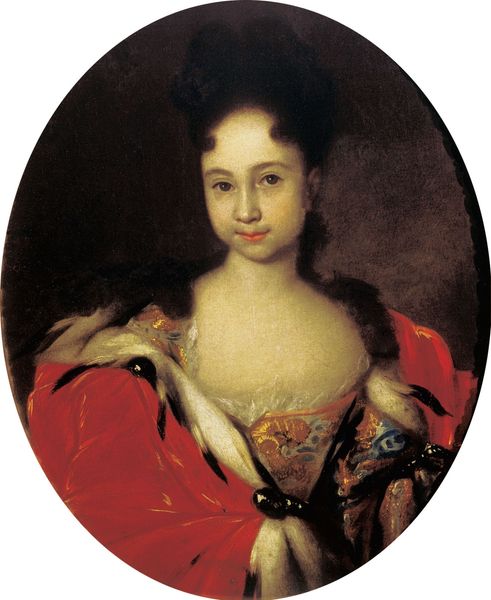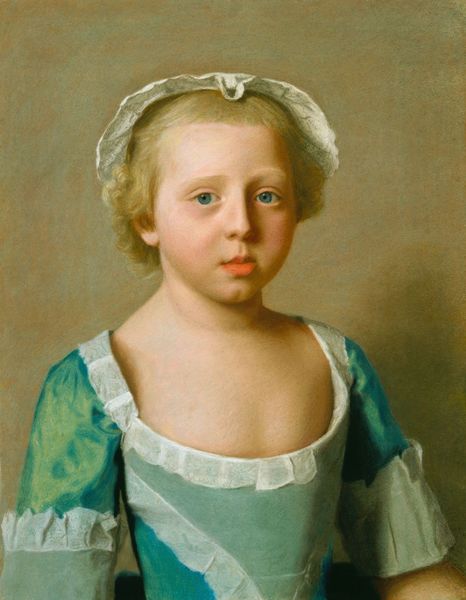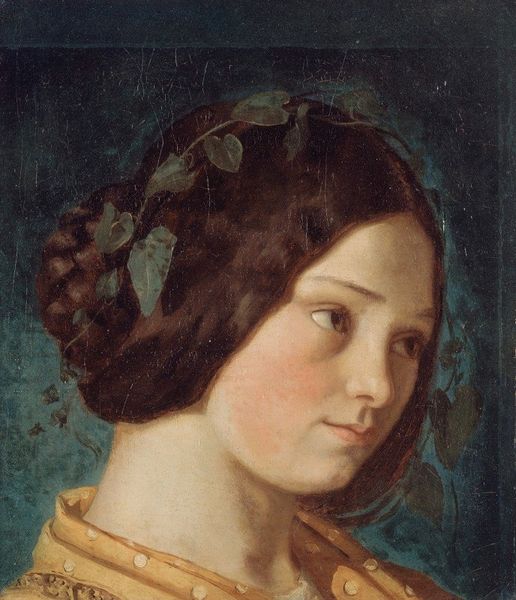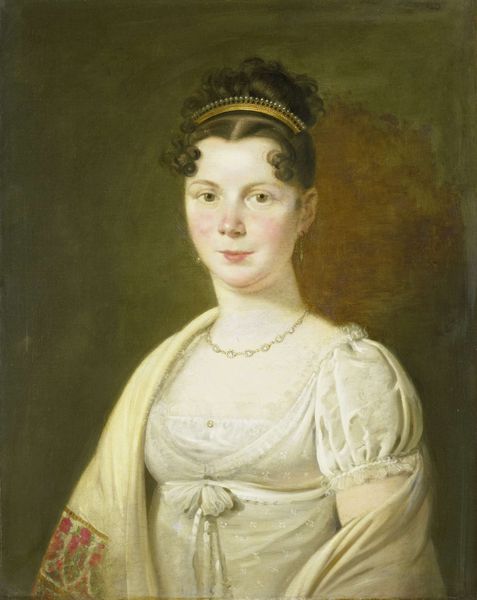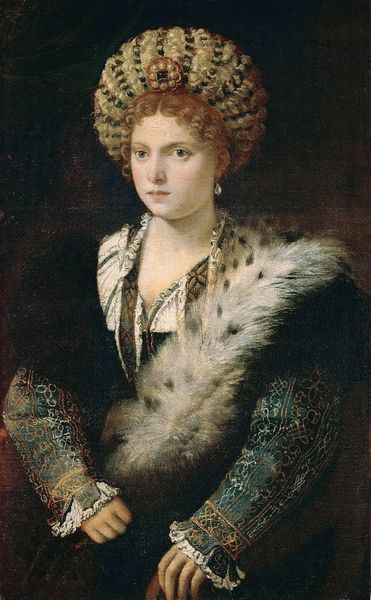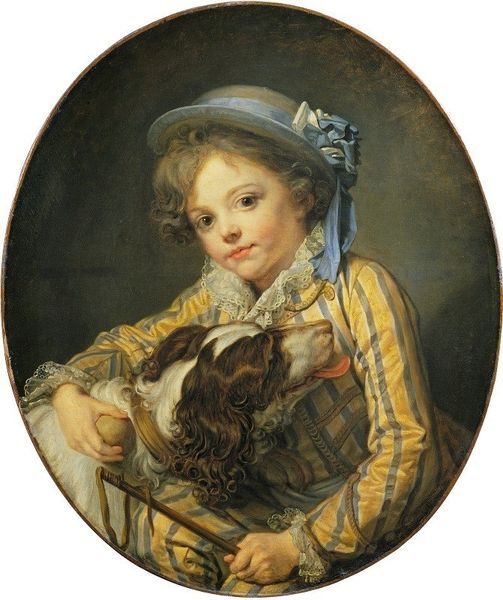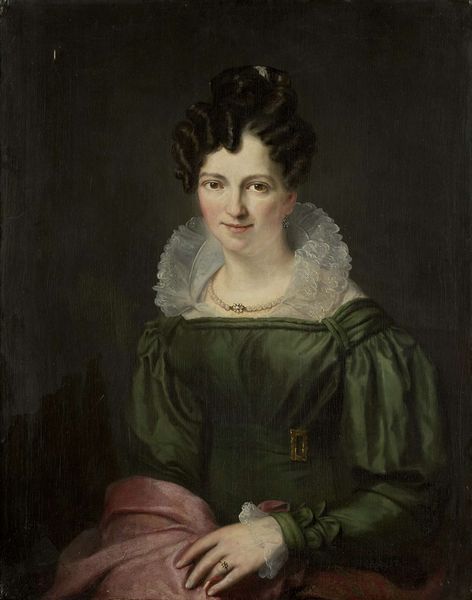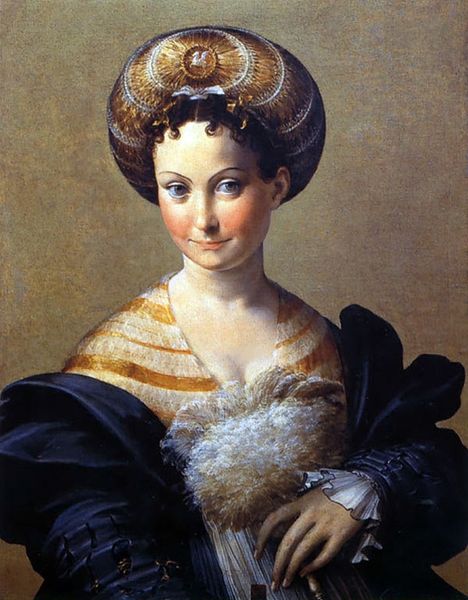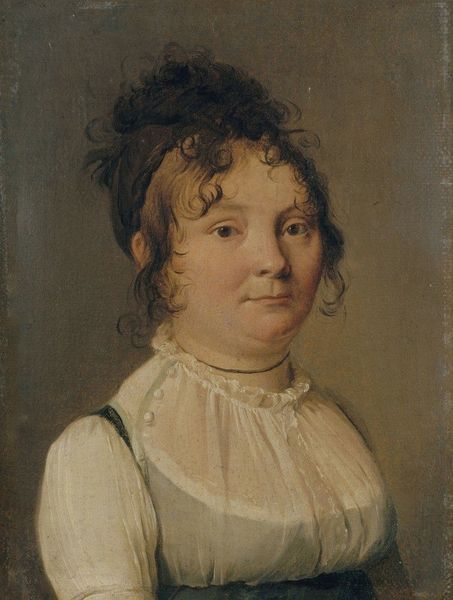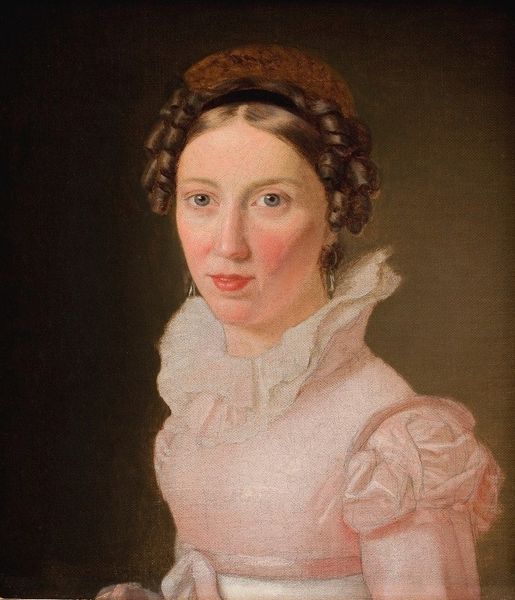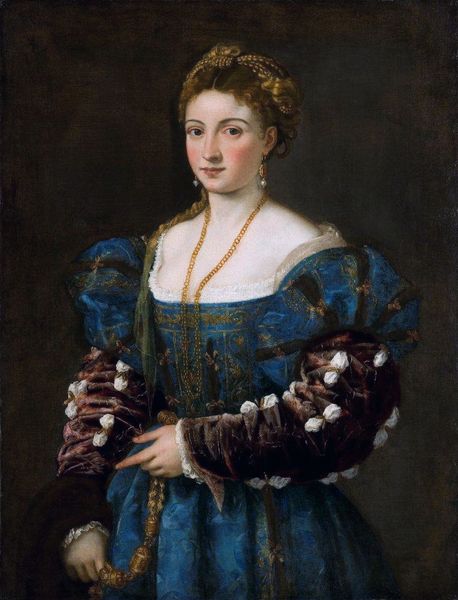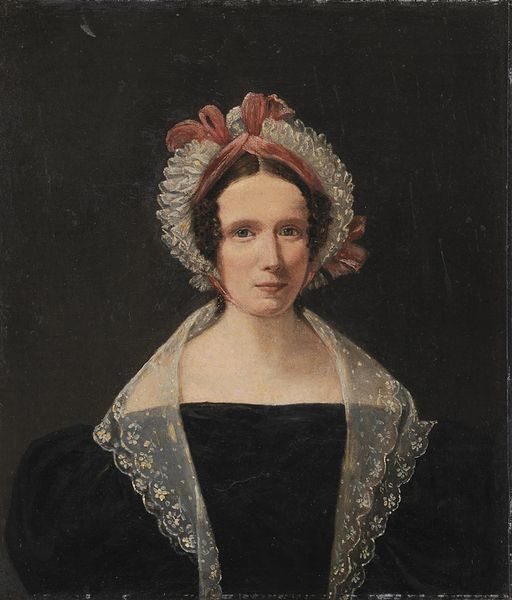
painting, oil-paint
#
portrait
#
painting
#
oil-paint
#
romanticism
#
realism
Dimensions: 28.5 x 21.5 cm
Copyright: Public domain
Curator: Standing before us is Corot’s "Marie Louise Sennegon," an oil on canvas portrait from 1831. What are your first thoughts? Editor: I am immediately drawn to the sitter’s direct gaze. There’s a sense of youthful apprehension there, yet the clothing speaks to her family's position. It feels like a formal presentation wrapped in a cloak of youthful vulnerability. Curator: Precisely. Portraits during this time, especially in the early 19th century, served a very important social function. This painting served as a symbol of bourgeois status, reinforcing social structures, and marking an important moment in this young woman's life and family legacy. It would have communicated respectability. Editor: And that’s visualized through symbols such as the hat. While small, its perched angle and deep black color convey both youthful charm and an underlying gravitas. Similarly, the orange knot at her throat appears decorative yet is clearly there to highlight status. The colors themselves hold symbolic value, reflecting qualities desired within her social class. Curator: You are spot on! Considering that, think about where and when Corot lived and worked. Paris in the 1830s was still reeling from the revolutionary period while on the cusp of monumental industrial change. What do you suppose he wanted to convey here by presenting this bourgeois figure? Editor: It projects an ideal, doesn’t it? Serenity. Calm. In this specific context, one must also note that even though this painting may look serene and harmless today, representing a specific socio-economic group was never neutral, always a form of promoting them or advocating for them. Curator: Definitely, portraiture in particular. To me, the choice of simple dress actually emphasizes the sitter. There's a purity he ascribes to the youth. Editor: It does lend a sense of innocence to her figure and makes me focus on the subject’s wide, contemplative eyes. Curator: By capturing this bourgeoise figure, and doing so in such an elegant manner, Corot participates in his society's construction of meaning. The museum thus becomes a place to observe the social architecture of history. Editor: For me, delving into this portrait, especially through the careful consideration of the symbols, allowed me to see her as something beyond just a painted subject, as someone embedded in both family history and the anxieties of the era.
Comments
No comments
Be the first to comment and join the conversation on the ultimate creative platform.
